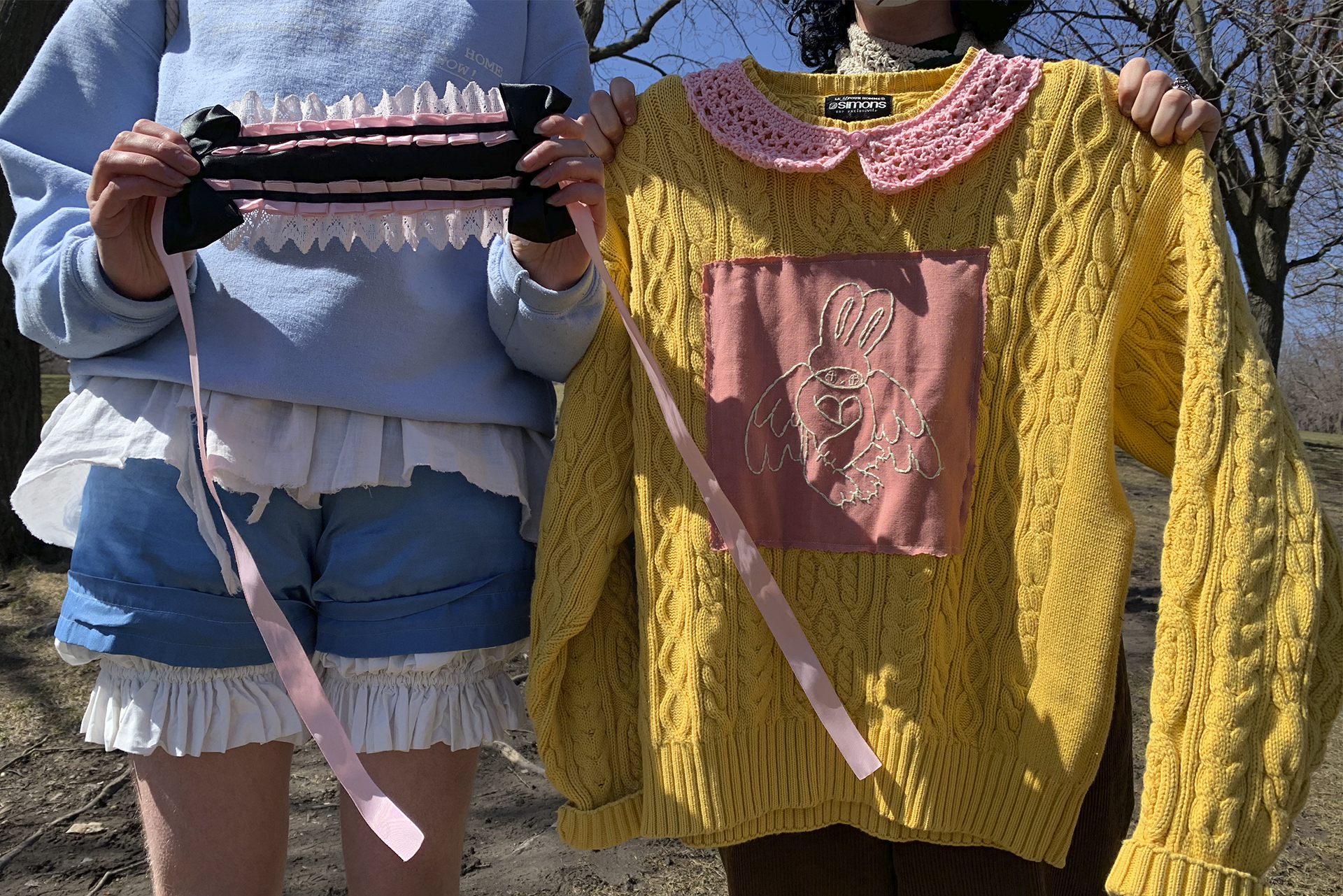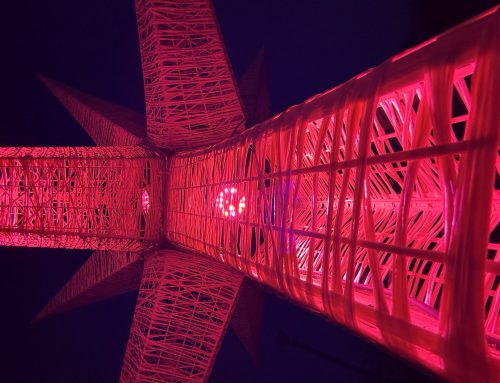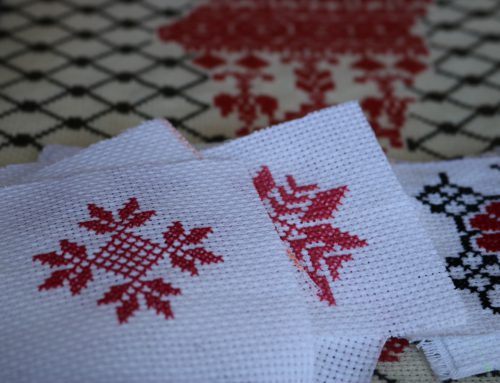BY Jamee McRae & Monica Matin
A rearing white unicorn with a two-tone mane and tail, overlayed on patches of fabric and lace, and framed by bows, and adorned with pearls, bells, fringes, and a drape of satin. These elements decorate a custom purple tote bag made for Carter Caravaggio from upcycled fabric and beads.
“I can’t even describe how happy I felt wearing my custom tote,” says Caravaggio, whose custom-built dream tote took weeks to bring to life. “Shelton and Tommy were able to make something so unique to me and my personal tastes.”
Beyond how much the custom tote played to Caravaggio’s tastes, he thinks upcycling is an effective way of stunting consumerism and textile waste, while satisfying shopping wants and needs.
Through their company JOYFOOL, Tommy October and his partner, Shelton Billings, give new life to garments that they’ve accumulated over the years, whether from thrift stores, friends or their own collections. They’re passionate about creating sustainable clothing for all, especially trans people, and do so through their Instagram-based fashion and accessories shop JOYFOOL.
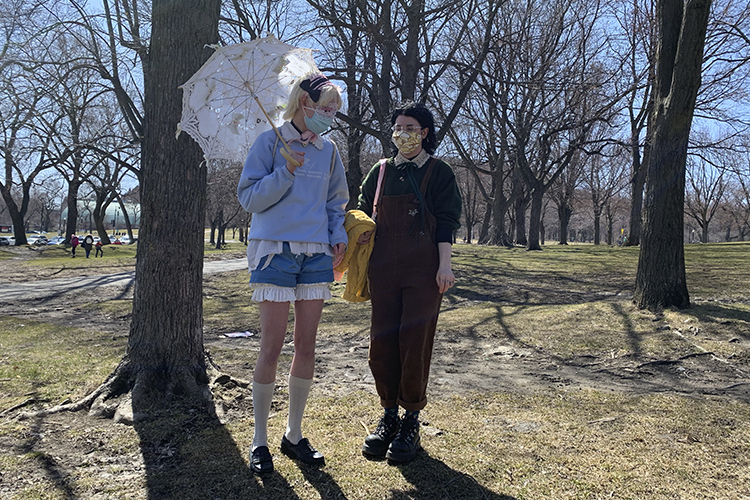
Upcyclers Shelton Billings (left) and Tommy October (right) of online shop JOYFOOL photographed in Jeanne-Mance Park on April 3, 2021. Photo by Jamee McRae.
“I think that clothing is such an intimate thing – to clothe yourself and to decide what things go on your body, what protects you and also what expresses your identity,” October says. “I think to do that the justice it deserves, for me, I feel like we have to do it in a way that is very intentional and loving. It would feel wrong to try to do something as intimate as provide someone with clothing in a way that has a large negative impact.”
Through their combined crocheting and hand-stitching skills, they work to create custom fashion items by use of recycled materials and sustainable methods. The items they design and create hinge on what they already have and what other sustainable materials they can get their hands on.
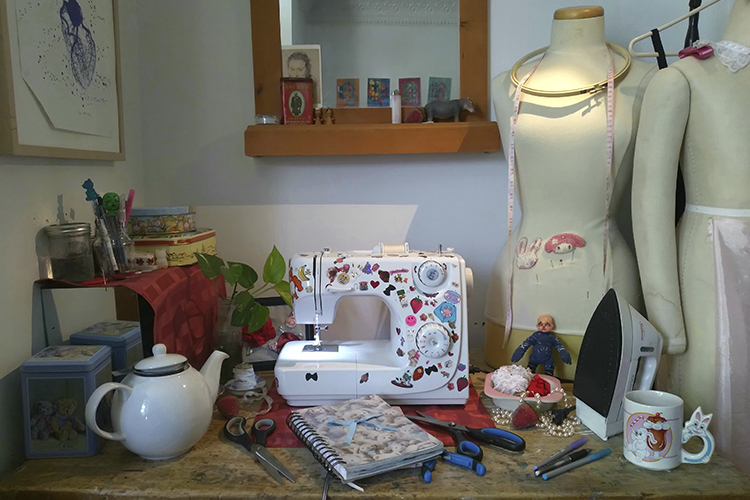
Behind-the-scenes of Shelton Billings and Tommy October’s workspace, where they create upcycled items for their online shop JOYFOOL in Montreal. Photo courtesy of Tommy October.
The process of upcycling fashion materials involves taking an existing item and adding design elements to it, modifying it, or using parts of it to create a new fashion item altogether.
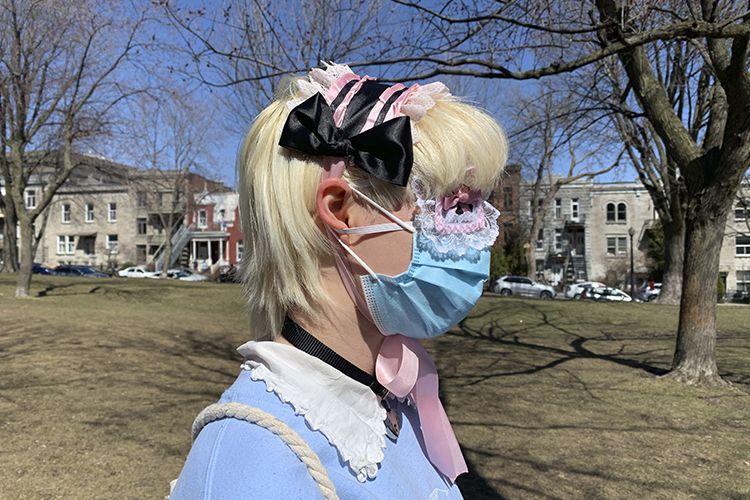
Billings wears a handmade eyepatch and headband he made of upcycled materials. Photo by Jamee McRae.
“I like to turn other garments either into modified versions of them or into a totally separate thing,” says Billings, who’s been working on upcycling a sweater to improve its fit, but also to kick it up a notch to suit his style.
“The bottom part of it I didn’t think fit very well, it was kind of a strange shape and there was a bit of damage, so I just took that bottom piece off and have been making a new bottom piece with a bunch of different gathered fabric from other torn or broken garments,” he says. “The pieces of that work together to make something new, and I think, a lot cuter.”
Such efforts are important to help counter the fact that the fashion industry has become the second most polluting industry in the world. According to the UN, clothing production has doubled in nearly a decade and a half to meet the global demand to stay in vogue.
The UN also says the industry consumes 93 million cubic metres of water per year. A striking 7,500 litres of water are used to manufacture a single pair of jeans.
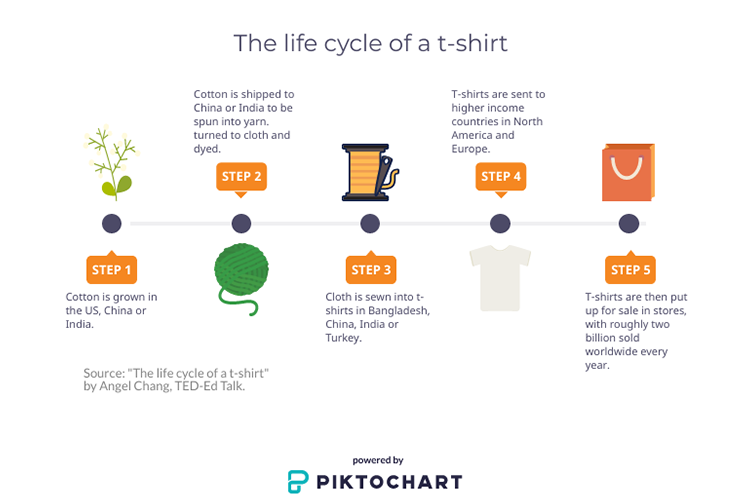
An article of clothing as simple as a t-shirt follows quite a complex path—with a carbon footprint to match—before reaching the display rack at the store. Media by Jamee McRae.
Recently, sustainable trends such as upcycling, thrift and vintage shopping, and using eco-friendly materials to create fashion items—including jewelry—have gained popularity.
Montreal artists, consumers, and experts alike discuss the rise of upcycled jewellery in recent years. Video by Monica Matin.
Vanessa Mardirossian is a textile designer and lecturer at École Supérieure de la Mode (UQÀM) who has worked in the fashion industry for 20 years. She says an industry-wide change towards sustainable processes will result from the cumulative influence of upcycling and other methods. To achieve that, a major shift in mentality across the industry is required. Mardirossian believes it’s imminent.
“The new mindset can’t be [focused on] profit. We have to change the mindset in that [respect]. The profit is not money but a common goal: living on a healthy planet,” she says.
While working in the fast fashion industry, Mardirossian would often send her print and colour templates to be mass-produced by manufacturers in China, only for the styles to be altered or canceled during production, in response to the latest trend.
Society’s continuous value shift is what Mardirossian believes will engender the most sustainable habits and the most change.
“We always thought that getting stuff makes us happy, but with the evolution of mentalities, we see that what is important is getting something we really like, not plenty of things we don’t even look at. We don’t wear half our wardrobes,” she says.
Mardirossian says that this is the result of the fast fashion cycle in which new styles are released on a weekly basis, as opposed to high fashion’s two collections per year: spring/summer and fall/winter. She believes a slower approach to fashion will bring the most sustainability to the industry.
“What’s good about [upcycling] is the history behind the object,” Mardirossian says. “It comes from somewhere. It had another life before. When there’s a history behind it, the bond is stronger.”
Upcycling may not yet be a method rampant enough to single-handedly turn the fast fashion industry towards sustainability, but it’s a start. A 2020 study conducted by Global Data for online thrift store ThredUp shows that the secondhand industry is set to hold 17 per cent of the market by 2029 versus 9 per cent by fast fashion. In 2019, they found that 74 per cent of adult consumers below 30 opt for sustainable fashion goods.
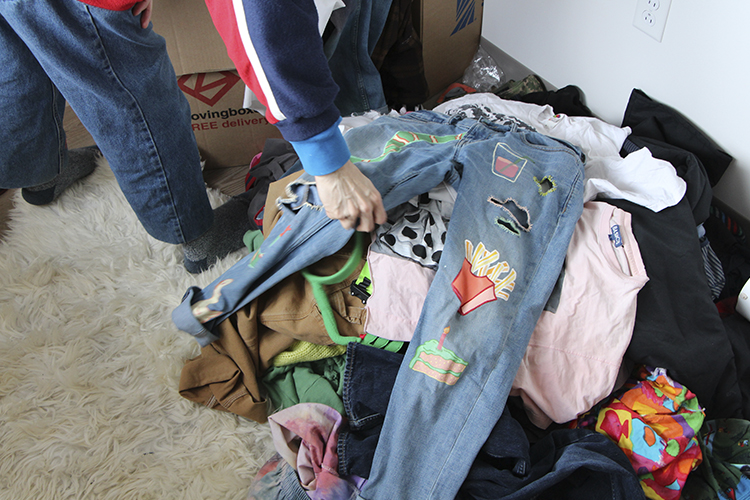
Rafael Silva Salanova lays out the pile of his upcycled clothing in his home in Montreal on March 16, 2021. Photo by Monica Matin.
Like upcyclers Billings and October, Darcy LaRiviere creates new clothing, bags, quilts, and other household items from recycled textile, working almost exclusively with denim, for her upcycled brand InJeanious Creations.
“I use denim for quilts. If I can’t use the top [of them]—if the jeans are in too bad of a shape and I can’t even use the top [of them to make] a purse – I cut the pockets out,” LaRiviere says. “I use the pockets for things called pocket boards. I try to use every bit of it. I even try to use the waistband to make straps out of them.”
She first upcycled denim to make a quilt out of old jeans for her brother when she was in her 20s. About 10 years ago, she began making jean purses. Since then, her upcycled product line has expanded to include reusable wine bottle bags, a range of pouches, wallets, and cup and bowl cozies. Out of the average pair of jeans, LaRiviere can make up to five or six new items.
“If I have one pair of jeans I could probably make one purse, a few jeans bags, maybe even a couple of wine bottle bags,” she says.“ And, if they’re 100 per cent cotton, I could probably get four squares for a quilt, too.”
“It’s my little part of not leaving a mark on the Earth, you know, to try to clean the Earth up,” LaRiviere says. “I can’t do everything, but I can do my part.”
